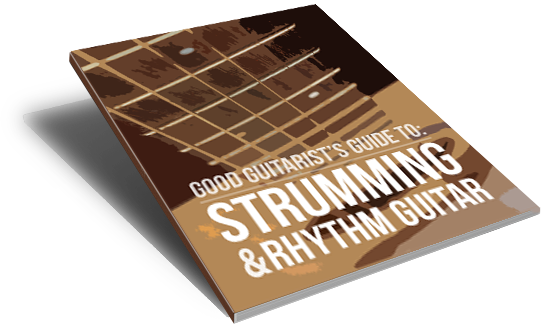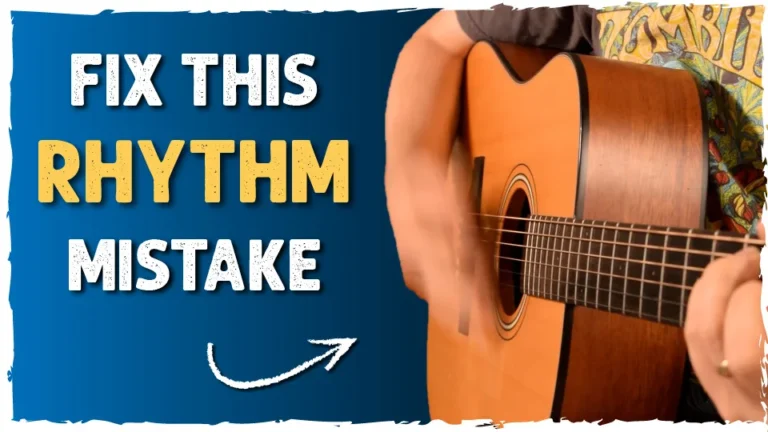5 Common Mistakes Self-Taught Guitarists Make and How to Fix Them
As a self-taught guitarist, I must admit to some of these myself… Learn from my mistakes!
Mistakes Self-Taught Guitarists Make and How to Fix Them
Feeling stuck in your guitar journey? In this video, I reveal the 5 most common mistakes self-taught guitarists make and how you can overcome them to keep progressing smoothly. These tips will help you improve without losing momentum. I find certain topics, like ear training, are made out to be way more complicated than they actually are, and are thus avoided. So today I’ll show you how to practice smarter, and focus on the right techniques to become a better guitarist. Watch till the end to unlock your full potential.
Table of Contents
- 0:00 – Intro
- 1:23 – Mistake #1
- 3:26 – Mistake #2
- 5:40 – Mistake #3
- 8:33 – Mistake #4
- 9:52 – Mistake #5
- 13:07 – Tips & Resources
Overcoming Common Challenges in Self-Taught Guitar Playing
So, you’ve started learning guitar, found some good beginner lessons, mastered the basics, and are now playing some easy tunes. You’re feeling great! At this rate, you imagine yourself becoming amazing at guitar within a couple of years, impressing everyone with your riffs and chord melodies. But as time goes on, you notice that your progress has slowed down significantly.
As someone who teaches guitar both in person and online, I’ve had many students who started their journey by teaching themselves. Often, they hit a plateau and come to me for lessons to solve the problem. Fortunately, it’s usually a simple issue that can be resolved with a little care and attention, often within days or weeks. Today, I’d like to share the five most common mistakes I see self-taught guitarists make and how to overcome them without losing progress.
1. Ignoring Ear Training
When I first started teaching myself guitar, I didn’t even know ear training was a thing. Many people who step into my studio find ear training mysterious, often recalling rigid and unenjoyable piano lessons from their childhood. However, ear training is crucial and can be simple.
A straightforward exercise is to pick a basic song or nursery rhyme like “Twinkle, Twinkle, Little Star” or “Happy Birthday” and try to figure it out on your guitar. Start by finding the first note, then slowly work your way through the melody. It will be tough at first, taking a long time to figure out a simple melody, but with practice, you’ll get faster. Eventually, you’ll be able to play melodies by ear more quickly and accurately.
2. Not Practicing Songs in Parts
Another common mistake is trying to play a song from start to finish without breaking it into manageable parts. Students often start strong but fall apart after a few measures. The solution is to practice songs in sections. Learn the verse, then the chorus, then the bridge, and so on. Break down the trickiest bits and practice them separately. Isolate difficult chords and practice transitioning in and out of them. This method helps build confidence and ensures you can play the song smoothly from start to finish.
3. Focusing on Quantity Over Quality
Many self-taught guitarists focus on learning more chords, strumming patterns, and scales, thinking this will make their playing more complex and interesting. However, it’s more important to focus on how you play the chords and patterns you already know. Ensure your chords sound clean, your transitions are smooth, and your strumming has a good tone. Record yourself playing and listen back to identify areas for improvement. Quality practice leads to better musicianship.
4. Improper Thumb Position
A common issue is improper thumb positioning. When you learn guitar by watching videos, you often can’t see the player’s thumb. Whether your thumb is on the back of the neck or over the top, it should always be upright or slightly off-center. This reduces tension on your wrist and improves your reach. Adjusting your guitar position and ensuring your thumb is in the right place can make a significant difference in your playing comfort and ability.
5. Choosing Songs at the Wrong Difficulty Level
Self-taught guitarists often struggle with picking songs that are either too easy or too hard. If a song is too easy, it doesn’t challenge you enough. If it’s too hard, you may spend countless hours practicing without significant improvement. Instead, find songs that are within your current ability but still challenging. Learn songs in a progression of increasing difficulty to build your skills gradually. Consulting with an experienced teacher can help you choose appropriate songs and create a structured learning plan.
In conclusion, the most important thing in learning guitar is to have a plan. Consistent practice and attention to key areas like ear training, song breakdown, quality playing, proper thumb positioning, and appropriate song choices will help you progress. Remember, even just putting the guitar in your hands daily for 10-15 minutes can lead to improvement.
For more help with guitar, I offer various courses depending on your level. Check out my Courses page for more info. Whether you’re a beginner or looking to tackle more advanced techniques, I have something for you. Thank you for reading, and happy practicing!
All-Access Pass
Start your 10-day FREE trial
- Step-By-Step Courses
- Exclusive YouTube Bonuses
- Q&A with James






